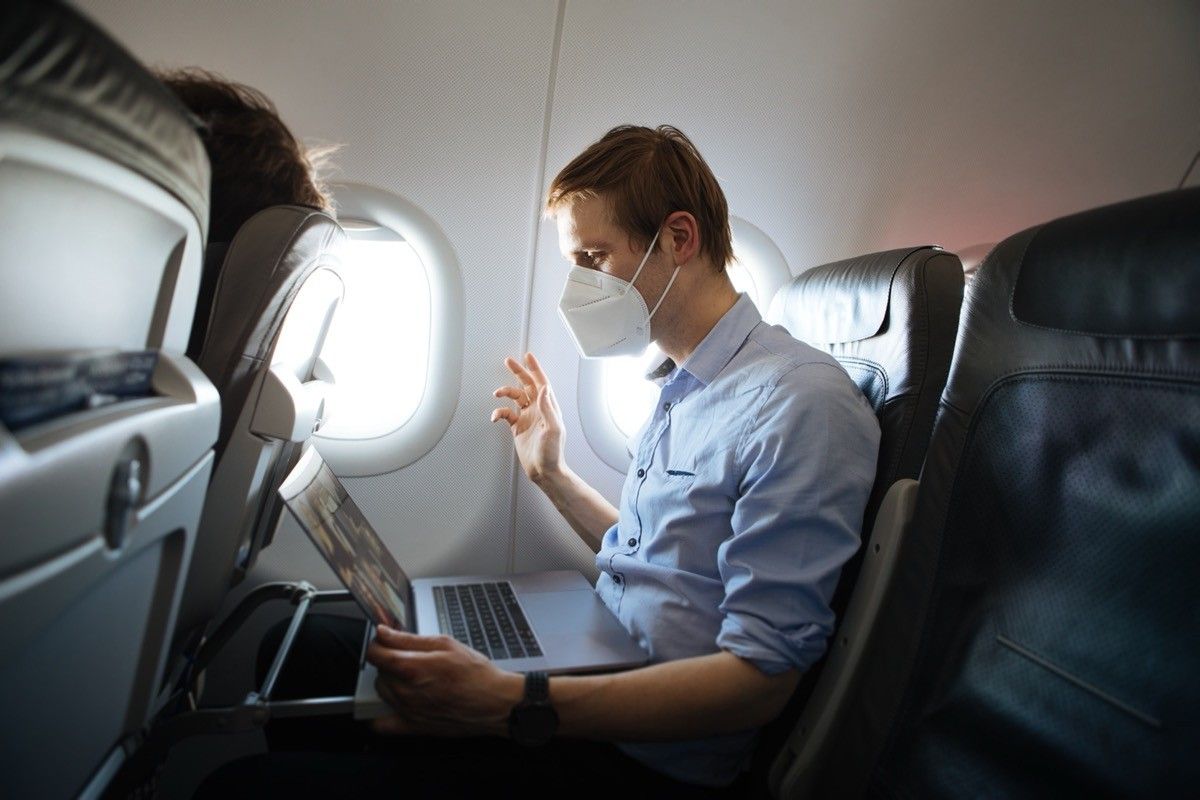RELATED: Half of People Who Have a Stroke Notice This a Week Earlier, Study Says. While blood clots can happen to anyone, certain activities make otherwise healthy individuals more likely to develop blood clots. According to the Centers for Disease Control and Prevention (CDC), sitting for four hours or more can significantly increase your risk of developing blood clots. Though the CDC notes that, even during lengthy periods of travel, the overall risk of developing a blood clot is low for most people, there are numerous factors that may increase your risk of developing the condition. These include being over the age of 40, being a person with obesity, having recently undergone surgery, using contraceptives containing estrogen, taking hormone-replacement therapy medications, being pregnant or having delivered a baby in the past three months, having cancer or having recently had cancer, having a catheter in a large vein, having varicose veins, having limited mobility, having had prior blood clots, or having a family history of blood clots. For the latest health and safety news delivered straight to your inbox, sign up for our daily newsletter! While the CDC explains that approximately half of people who develop deep vein thrombosis (DVT)—a type of blood clot that forms in a deep vein, most commonly in the legs—experience no symptoms, there are signs that can alert you to the condition, including swelling in the extremities, sudden localized pain or tenderness, redness of the skin, or skin that feels warm when you touch it. Signs of a pulmonary embolism (PE)—which occurs when a portion of a blood clot breaks off and blocks an artery in the lung—can include anxiety, chest pain or discomfort that gets worse with deep breaths or coughing, coughing up blood, difficulty breathing, a rapid or irregular heartbeat, fainting, and lightheadedness. Pulmonary embolisms—which are most often caused by DVT, according to the Mayo Clinic—frequently prove fatal, with approximately one-third of individuals whose PE goes undiagnosed or untreated dying from the condition. If you are taking a long trip, plan to get up and move around frequently during your travel. The CDC recommends taking a break to walk every two to three hours and moving your legs regularly in between walking breaks. The agency also recommends stretching your legs frequently during travel, including extending your legs and flexing your ankles, as well as bringing each knee to your chest for 15 seconds and holding it in place, then repeating. If you have any of the aforementioned risk factors for blood clots, or if you know you’ll be taking a long trip in the near future, talking to a healthcare provider can help you come up with a plan for how to reduce your blood clot risk during travel.ae0fcc31ae342fd3a1346ebb1f342fcb In addition to moving regularly throughout your trip, this may include the use of compression stockings or pneumatic compression devices, elevating your legs during your trip, or taking anticoagulant medications. However, don’t start using any of these without first checking in with a medical professional to make sure they’re right for you. If you happen to notice any signs of either DVT or a pulmonary embolism while you’re traveling, make sure to get to a healthcare facility immediately, as these can quickly become medical emergencies. RELATED: Eating This One Vegetable Slashes Your Stroke Risk By 55 Percent, Study Says.



